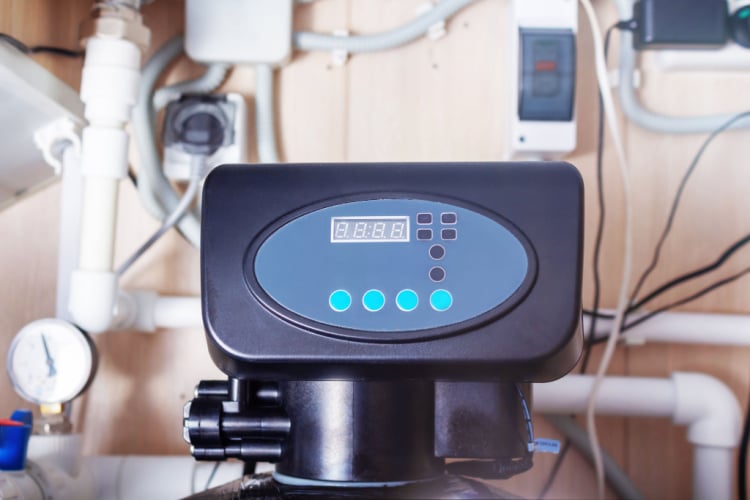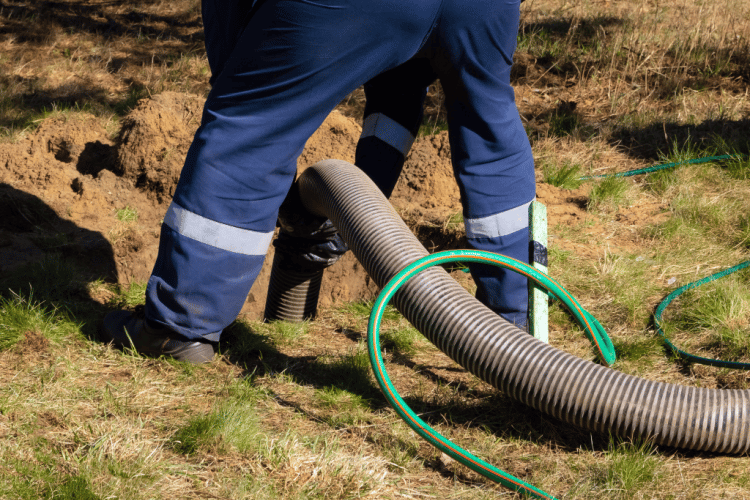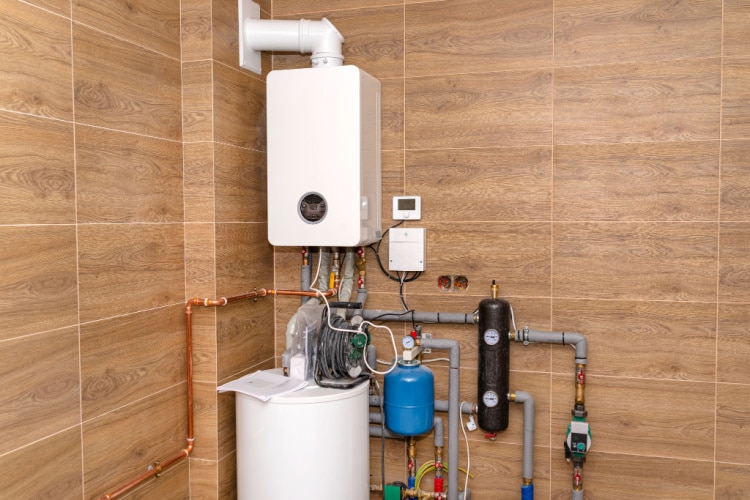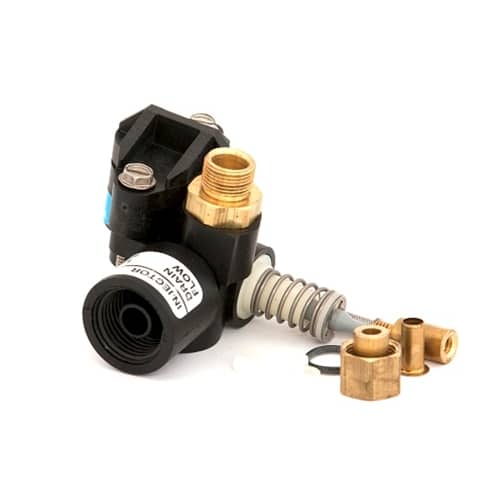Salty water coming out of the water softener isn’t that surprising since these devices replace heavy mineral ions with sodium ions. However, while the process gives the water a slightly salty taste, it’s not supposed to be so noticeable that it makes you gag.
In this article, we’ll go through the most common reasons why you might be getting a salty taste in your water, as well as some solutions that you can implement to fix the issue.
Why Is This Happening?
Water softeners have two tanks – a resin tank and a brine tank. The resin tank is the larger one where hard water from your pipes is softened by sifting through the resin bed inside. The brine tank is where salt and water are mixed together to create a brine that’s used to regenerate the resin beads in the main tank.
The resin uses a process called ion exchange to replace the magnesium and calcium minerals in the water with sodium molecules. This results in softened water that has a slightly salty aftertaste due to the sodium. The keyword here is “slightly.”
You should be able to detect a tinge of saltiness in the water, but it should definitely not be a pronounced taste.
There are several possible causes for the very salty taste in your water, but all of them rKind Water Systemslve around the brine tank and its components. More specifically, the possible causes for this issue are the following:
- a power outage
- the drain line
- the brine line
- issues with the valves and injectors
Power Outage

In the event of a power outage, the water softener will reset, but it won’t cause a sodium buildup. However, it’s a different story if the power outage happens during a regeneration process.
If the regeneration process stops halfway, the rinse cycles won’t take place, so the brine that’s meant to recharge the resin will probably still be in the main tank. Turning the water softener on with the brine still in the resin tank will cause the water to mix with the brine solution and result in very salty water coming out of your faucets.
Solution:
After the power outage, this is what you need to do:
- Manually start the regeneration process again, or set the timer to do it for you
- Wait for everything to finish and for the brine in the tank to get flushed from the system
- Wait for the regeneration process to stop
- Start the water softener as you normally would
Drain Line

The drain line is meant to take the brine and the wastewater from the main tank and flush it down the drain. If you do not have a drain nearby, don’t worry, drain lines can be set up to flush the water into buckets or other containers, but the same general principle applies in both situations.
Drain lines are just hoses, so they’re not all that durable. A kink, a blockage, or any damage to the hose itself can disturb or completely stop the draining process. If the wastewater isn’t properly drained, then it’ll remain in the tank and mix with the softened water.
Solution:
- Check the hose for any blockage or damage. Since the blockage can be on the inside and therefore unnoticeable, it’s best to also remove it and run some warm water through it to make sure that it can flow freely. The warm water will also soften any leftover brine in the hose, which makes it easier to completely remove it with another short flow of water through the hose.
- Once you’re done, put the hose back on, direct it into a bucket and run the regeneration cycle. If there’s wastewater in the bucket at the end of the process, then you should be good to go. However, if the hose is clean and the bucket is empty, it means there’s an obstruction somewhere else.
- If the drain line has a kink in it, then simply straighten it out. Inspect the hose to see if the kink wore it out or caused a tear; if not, it should be good to go.
Brine Line

The brine line is the hose that takes the brine solution from the sodium tank into the resin tank. Since it constantly has brine running through it, it’s not uncommon for it to get blocked. Sodium can stick to the walls of the hose, form clumps, and lead to a thick layer of sodium buildup.
This can result in the regeneration process using more or less brine than necessary. Either way, blockages in the brine line can lead to salty water.
Solution:
Follow our instructions for the drain line and repeat the same procedure, but this time on the brine line hose:
- Disconnect it, clean it out with warm water, and reconnect it
- While the hose is disconnected, hold it over a bucket and run a few gallons of water through it. This will allow you to check whether the flow is steady and whether there’s nothing blocking it or causing it to be passed through in bursts instead of an even stream.
Injectors and Valves

Injectors and valves are generally not grouped in the same category because valves are simply metallic fittings, whereas injectors are more sophisticated fittings that have a few moving components.
However, for the sake of simplicity, they can be considered the same type of component. These components connect the hoses to the tanks, and they’re actually a lot more prone to sodium buildup than the hoses themselves. This is partly due to the materials but also because there are many more chambers and crevices in valves and injectors where the sodium can get stuck.
Buildup in the holes of valves and injectors can cause the water or the brine solution to get stuck in the main tank in much the same way as it can happen with hoses.
Solution:
- Carefully remove these components and soak them in warm water for a few minutes. This should be enough to soften and dislodge some of the buildup, but more importantly, it’s easier to scrub off excess sodium when it’s softened with warm water than when it’s dry.
- After soaking the components, take a toothbrush or something else with soft bristles,and gently scrub in and around the openings on both the valves and the injectors. Valves are made out of metal, so vigorous scrubbing won’t do much other than scratch them, but injectors can get damaged if you’re too rough.
- Once you finish scrubbing, change the water and soak the components again to rinse them out and to make sure that if you missed a few spots, the second rinse will remove everything
- Lastly, take the injector and valves out of the water, pat them dry with a cloth, and let them sit for a few hours to completely dry before attaching them back onto the water softener
Using the Water Softener During the Regeneration Cycle
Most water softeners have an internal mechanism that prevents you from using the taps while the regeneration process is running.
However, there are a lot of models that don’t have this feature, which means that you’re responsible for knowing when the regeneration process is running and not using your softener during that period. Most regeneration timers are set to run at night to avoid this exact issue.
If your model allows you to turn on the faucet even during the regeneration cycle, then the reason why the water tastes like salt is because of the brine solution present in the main water tank.
This isn’t poisonous since it’s just a salt and water solution, but it definitely leaves a bad taste in your mouth.
Solution:
The only thing you can do here is to set your regeneration timer to an hour of the night when you usually sleep and don’t use your faucets.
Other Issues
Water softeners are pretty simple devices on paper – hard water goes in, and soft water goes out. However, they still have a lot of complex parts that need to be maintained, fixed, and replaced.
The solutions that we’ve outlined in this article are effective for the most common issues causing salty water to come out of your taps, but they’re far from the only causes of this problem.
Other more uncommon causes of salty water include:
- water pressure issues with the resin tank
- issues with the onboard regeneration process computer
- issues with the internal valve release mechanisms
What we’re trying to say is that there are a lot of malfunctions that can disturb the water-softening process. The problem is that these issues are very difficult to diagnose and even more difficult to fix, especially through an online article.
If you’ve already tried all of the methods that we’ve outlined in our article, then you’ve done as much as you can. Anything beyond this will require intricate knowledge of the inner workings of these devices, i.e., hiring a professional, or you’ll be taking mechanical components apart and risking damaging the water softener and completely voiding the warranty.
The bottom line is this – if the water is still extremely salty even after you’ve cleaned out all of the components that we mentioned, then it’s time to call a professional so that they can get to the bottom of the issue.
Conclusion
While there are many reasons you might be detecting a lot of salt in your drinking water, the solutions we’ve outlined can easily help you get rid of the issue.
If there was a power outage, then you need to turn the system back on and make sure that you input your preferred regeneration time before it can run again.
You’ll also need to remove both the drain line and the brine hose to check them for any blockages or damages before putting them back on the system.
While you’re at it, you might also want to put the injectors and valves in warm water and let them soak for a bit before taking a brush and removing any built-up sediment from the edges.
And finally, the last thing is to ensure that you don’t run the water softener while the regeneration process is taking place.
Hi, i was told by my water softener company that the reason my water tastes salty is because of runoff from roadway salt.
Somebody trying to sell me their water system checked the report in my local area to tell me no, it’s the water softener.
I just want the facts, and be able to use my water ionizer without my water tasting bad. I am hoping there exists a filter i can attach to my ionizer. But what can you do to help. Thanks.
Hi Patricia, sorry to hear about your water issues. Can you tell me what kind of system you have right now, brand/model, and any other details?